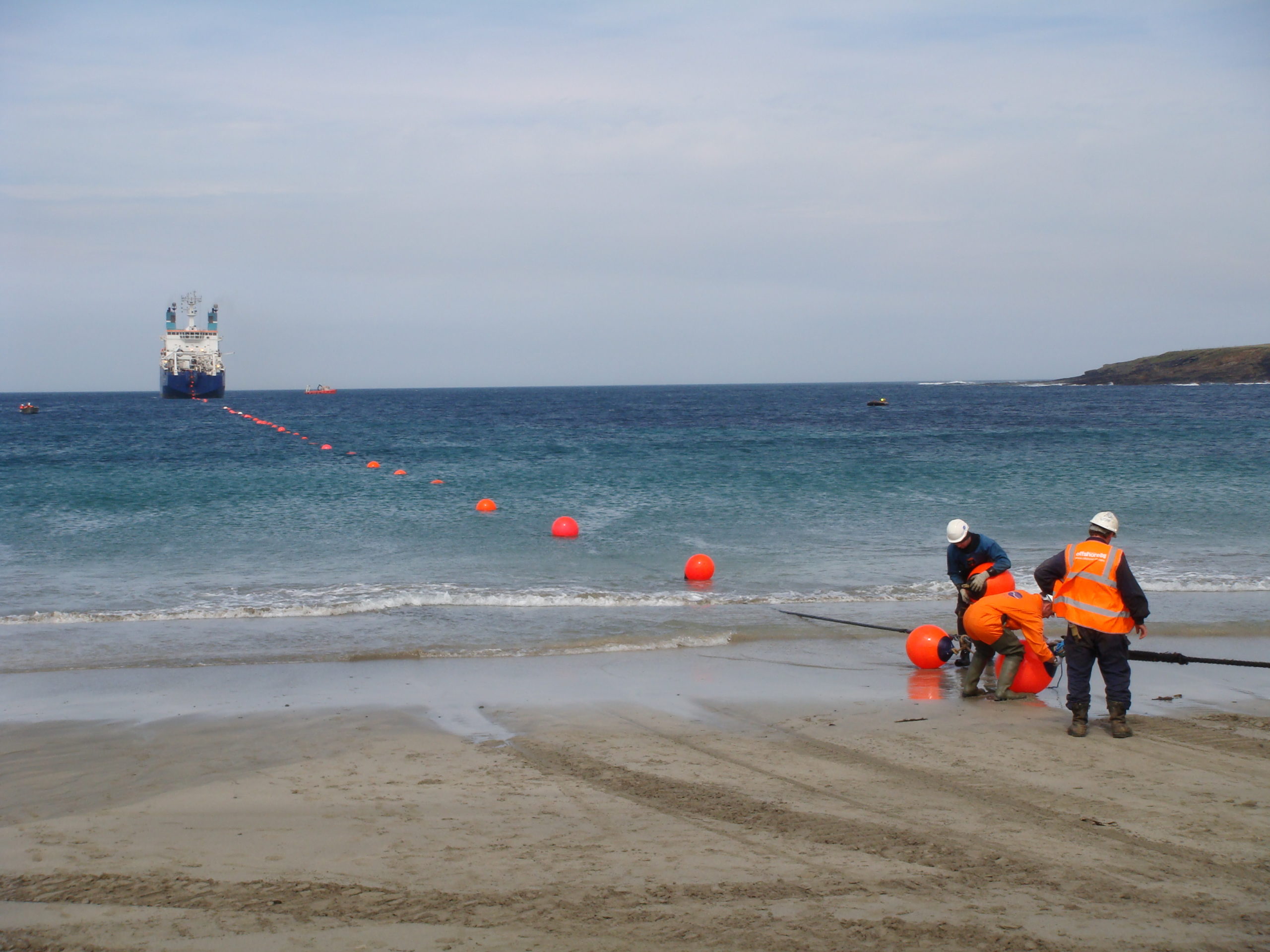Contact Us
Tuesday 28th September 2021

As an independent island nation, the UK is heavily dependent on the uninterrupted provision of communication and power services, the vast majority of which is delivered by subsea cables. But what happens when those cables are compromised? Our CEO Ian Douglas recently spoke with the National Preparedness Committee to offer a possible solution. Read the full article on their website here, along with other news, articles and reports for the commission surrounding the resilience of the UK.
In 2017 a new, young MP called Rishi Sunak provided a foreword to a Policy Exchange report on subsea cable infrastructure. He said that: ‘A successful attack on the UK’s undersea cable infrastructure would be an existential threat to our security. Yet, the exact locations of these cables are both isolated and publicly available – jugulars of the world economy which are a singularly attractive target for our enemies… most governments have not given undersea cables enough attention.’
Today, nearly all data traffic is carried via subsea communication cables which connect the UK to the rest of the world and underpin our digital economy. Around a quarter of our electricity arrives on the mainland via submarine power cables and this is rapidly expanding with the growth of offshore wind farms in particular.
Clearly, this an issue of great importance and consequence but subsea cables have yet to receive the political and policy/regulatory interest they deserve.
As well as the MP writing in 2017, the UK’s Defence Secretary and, indeed, US intelligence officials have recently spoken of Russian submarines “aggressively operating” near Atlantic cables as part of its unconventional methods of warfare. When Russia annexed Crimea, one of its first moves was to sever the main cable connection to the outside world.
Then there is the accidental damage to subsea cables through maritime activity, primarily demersal fishing (trawling) as well as ships’ anchors.
Previous events such as the ‘isolation’ of the Channel Islands in 2017 and loss of all power to the Scillies in 2016 have demonstrated the real risk of cable damage. In 2020 there were 33 emergency cable repairs in the Greater Atlantic region, with 17 to cables serving the UK.
Yet, despite communication and energy cables being an essential component of the UK’s critical national infrastructure, there is no integrated governance regime in place to mitigate the consequences of them being damaged.
A series of maintenance agreements between operators and countries served exist but these are based as much on convention and goodwill as a national security and, therefore, lack teeth and lead to inconsistent implementation. They need to be strengthened.
Network operators are increasingly taking a lax approach to their speedy restoration, potentially exposing the UK to a market environment which will not find it cost effective to repair UK subsea cables, especially when the UK is being bypassed more frequently as a main artery location. The new norm for repair times is months not days.
This is a fast-growing issue as the remaining UK cables are increasingly owned by US tech and multimedia giants but used by the UK telecommunications industry – and, indeed, HM Government – which do not have the same traditional telecommunications and connectivity approaches and requirements. These multinationals have low drivers for instant maintenance of their subsea infrastructure and typically allow multiple faults to develop before seeking to resolve them, leaving mission-critical services that rely on these cables to be ignored.
Major issues are often said to have no silver bullet. However, in this case there are clear steps the government could take, building on international best practice to build national resilience. The government should, for example, establish a governance policy fit to respond to threats both routine and hostile.
The Australian Communications and Media Authority, the Australian equivalent of Ofcom, operates an installation permit system which takes steps to ensure the safety and integrity of subsea cables. A key condition to secure such a permit is that the carrier must demonstrate that it has an adequate and available maintenance and repair solution.
The regulatory approach provides certainty in terms of operating rights as well as specific measures to protect critical infrastructure in Australian waters, ensuring a base level of resilience to the cable network overseen by government.
The UK Government should look to bolster its network resilience with a permit regime overseen by Ofcom and Ofgem and working closely with the National Cyber Security Centre (NCSC) and the Centre for the Protection of Critical National Infrastructure (CPNI). This would require a mandatory UK sovereign repair coverage 24/7, 365 days a year, and for a regular inspection regime, potentially mandating the use of UK-flagged vessels.
A strong and effective regulatory regime should also require providers to have a UK-based capability with cables stored in the UK and with maintenance, repair and overhaul processes provided under UK flagged vessels to support national security and strength the UK’s sovereign capability.
Such a regulatory regime will also strengthen the UK’s maritime industry and ensure that civil contingency and defence considerations are effectively addressed in a way that they are not today, giving the government more ‘directional’ options to use UK flagged vessels in a national emergency than it currently has.
It is time that the threat to subsea cables was taken seriously and the means to deliver greater resilience is fully considered by the government.
Global Marine Group is a global market leader operating in the telecoms, offshore renewables, oil and gas and deep-sea research sectors. It is the only UK-domiciled company that lays and maintains communications cables and, as a member of Atlantic Cable Maintenance & Repair Agreement (ACMA), it operates two of the three vessels responsible for the cable repair and maintenance of systems in the North and South Atlantic, English Channel, North Sea, Caribbean Sea and South East Pacific.
